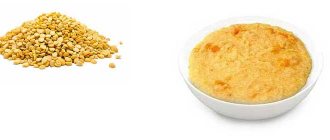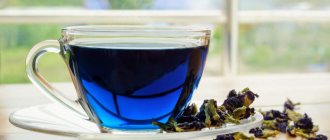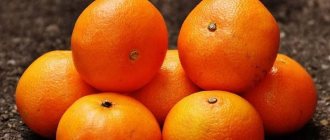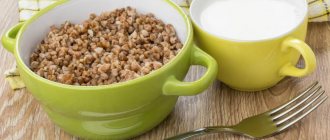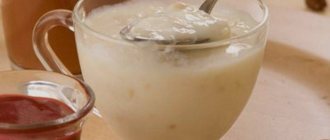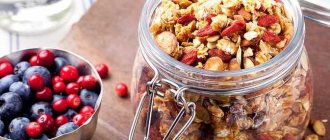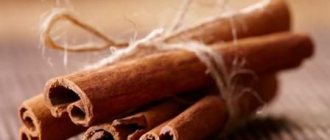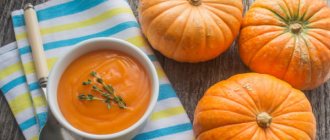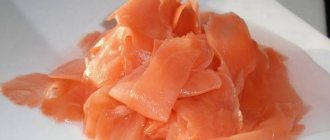General Product Information
Pea flour is a dietary product available to absolutely everyone. It is used for good nutrition, improving one’s health, as well as providing the body with sufficient amounts of vitamins, proteins and mineral salts.
Pea flour is sold in almost all stores. However, some chefs prefer to make it at home. For this purpose, they use regular peas, which are ground in a coffee grinder.
The product in question is used to bake bread, prepare pasta and confectionery, as well as vegetable cutlets, flatbreads, and salty or sweet cookies.
The main feature of this flour is that during frying it does not absorb any animal fat or vegetable oil.
Making the dough
To make homemade pancakes, you should knead viscous pea dough. It should immediately be noted that it is done completely differently than the classical basis.
First, in a separate bowl, mix pea flour with whole grain flour. Then turmeric, table salt, ground pepper are added here and after mixing all the bulk ingredients, regular drinking water is gradually poured into them. The result is a fairly viscous, but at the same time homogeneous dough.
To make homemade pancakes more delicious, additional ingredients must be added to them. They use fresh dill, cherry tomatoes and sweet peppers. All mentioned products are pre-washed and heavily chopped with a knife.
Also add slaked soda and garlic cloves to the dough. The latter are freed from the husks and grated on the smallest grater.
Pea balls
This unusual dish is equally appropriate for a regular lunch and a festive buffet. To surprise your family and guests with it, you will need:
- 350 g boiled peas.
- 150 g smoked sausage cheese.
- 1 egg.
- 1 onion.
- 4 tbsp. l. regular white flour.
- 3 tbsp. l. breadcrumbs for breading.
- Salt, herbs, spices and any vegetable oil.
This pea dish is prepared quite quickly and simply. It is recommended to start the process by processing the onions. It is peeled, chopped with a sharp knife and combined with pea puree. The resulting mass is mixed with chopped herbs, grated sausage cheese, salt, spices, egg and breadcrumbs. Balls are formed from the prepared minced meat, breaded in flour and fried in boiling oil.
Use of the component in cooking
Protein flour is rarely used in mass production. It can only be found in local organic establishments or on the menus of expensive restaurants. The component itself is maximally available both on the Internet and on the shelves of the nearest supermarket, so it is most rational to use flour in home cooking. Mix the component with other types of flour (wheat, buckwheat, corn), create new unique flavor combinations and don’t forget to experiment with benefits for your family.
Quick recipe for Indian pea and tomato fritters
Nutritional value of the dish
| Calorie content | 271 kcal |
| Squirrels | 11 g |
| Fats | 1.6 g |
| Carbohydrates | 54.5 g |
We will need:
- pea flour - 10 tablespoons;
- whole grain wheat/corn/oat/buckwheat flour – 5 tablespoons;
- tomato – 1 piece;
- garlic – 1 clove;
- chopped ginger – 1 teaspoon;
- turmeric – 1 teaspoon;
- greens to taste.
Preparation
Best materials of the month
- Coronaviruses: SARS-CoV-2 (COVID-19)
- Antibiotics for the prevention and treatment of COVID-19: how effective are they?
- The most common "office" diseases
- Does vodka kill coronavirus?
- How to stay alive on our roads?
Mix flour and dry spices in a deep container. Stir thoroughly, then gradually pour cold water into the container in a thin stream. Add water until you get a thick dough for making pancakes.
In a blender, puree the tomato into tomato paste and add it to the container with the dough along with the chopped herbs. The pea flour and optional flour mixture should swell and become soft. The dough should not be light. Achieve the most elastic and pliable consistency by adding liquid and dry ingredients (tomato paste, cold water, flour).
Form pancakes and fry on both sides in a non-stick frying pan or with a drop of vegetable oil for frying. The prepared dish can be an excellent option for a healthy breakfast or snack.
Cooking methods at home
When the raw materials are ready, the question arises: how to make buckwheat flour, what technique is best suited for this?
The choice of device for grinding raw materials depends on the required amount of the finished product and its structure.
- Coffee grinder. The simplest, most convenient and affordable option. Suitable for producing not very large batches. Allows you to obtain finely ground products.
- Blender. This household appliance is more powerful and allows you to make more flour. You need a knife attachment for chopping.
- A food processor is also suitable if it has a metal attachment, because the grains are quite hard.
- Special mill . Such equipment costs a lot, but if whole grain flour is to your taste and you want to constantly make it with your own hands from different cultures, then it is better to buy powerful electrical equipment. The kitchen appliance allows you to adjust the gap between the millstones, and therefore the grind size.
You can also use a manual spice grinder. But it is only suitable for obtaining a small amount of product with coarse inclusions (for example, for breading).
How to make buckwheat flour at home in a blender
You can grind buckwheat into powder without a coffee grinder. A blender will do just fine instead.
Grind the grain according to this scheme:
- Pour the prepared cereal into the bowl in portions: about a glass at a time. Small amounts of grain are ground better and faster.
- Grind in a blender until the cereal turns into powder. The more powerful the device, the less time it takes.
- Pour the resulting powder onto a sieve and sift.
- Collect large particles and place them back into the blender for grinding.
After receiving the flour, it is immediately used for culinary purposes. To store it, it should be scattered on white paper and left to cool and finally dry for another day.
Making pea flour
This flour is sold everywhere, and it won’t be difficult for you to buy it. However, the product is easy to prepare in your home kitchen. This way you will be completely confident in its high quality. Determine the amount of peas based on how much flour you want to get.
Ingredients:
- dry peas.
Preparation:
- Sort through the peas, rinse them and dry them thoroughly, placing them in one layer on a paper towel. Do not use newspaper for this purpose, as peas will absorb all the harmful components contained in printing inks.
- Take a coffee grinder (you can also use a meat grinder). Grind the peas into powder.
- Place the pea flour on a white cloth. We distribute it so that the layer is no more than two centimeters high.
- Leave the product in a dry place until it dries. Stir the flour periodically to remove the moisture.
- The finished flour is light in color and will easily come away from your hands.
On a note! Pea flour should be stored in a paper bag or fabric bag in a dry place. It must be sifted before use.
Lenten puree soup
This option will be a real find for those who have not yet decided what to cook with peas for lunch for vegetarians. To make this creamy soup you will need:
- 500 g potatoes.
- 500 g crushed peas.
- 150 g juicy carrots.
- 150 g onions.
- 2.5 liters of settled drinking water.
- Salt, herbs, spices and any vegetable oil.
The washed peas are poured with clean water and placed on the switched on stove. As soon as it begins to boil, add potato cubes to it, and twenty minutes later add sautéed onions and fried carrots. All this is seasoned, salted and brought to readiness. At the final stage, the contents of the dish are processed using a blender and supplemented with chopped herbs.
Cooking process
Pea puree can serve not only as an excellent dietary dish, but also as a tasty side dish for meat or fish. There is nothing difficult in preparing such a dinner.
First, drinking water is brought to a boil in a deep saucepan, and then chopped peas are gradually poured into it. If you want to get a homogeneous and as tender puree as possible, then it is better to first sift the flour through a sieve.
As soon as the dish begins to thicken, add salt and various spices to taste. Constantly stirring, you should remove the finished pea puree from the stove and cool slightly. It should immediately be noted that during the cooling process, the mass of the bean product will noticeably thicken.
At the very end, fresh butter is added to the finished dish and then stirred vigorously. Only after this is the puree served at the dinner table.
Pea pancake recipe
Pea pancakes can be considered a traditional Russian dish, since peas have long been grown in Rus'. But they are rarely cooked, despite the widespread use of pea flour. Despite the fact that peas are served mainly salted, pancakes from them can be made with sweet fillings, and salted minced meat is also well suited. The recipe for pea pancakes is simple, as they do not require any special ingredients.
Ingredients - to prepare, take 0.5 liters of milk, one glass of wheat flour, one glass of pea flour, three eggs, a teaspoon of sugar, a pinch of salt, oil for a frying pan.
Prepare as follows:
- Prepare the dough - mix wheat and pea flour, and pour through a sieve so that the flour becomes airy.
- Add sugar and salt.
- Add eggs, mix until the mixture becomes homogeneous.
- Pour the milk in a thin stream, stirring constantly.
- Add a tablespoon of sunflower (corn, olive) oil; the dough should not be thick, but slightly viscous, but liquid and flowing.
- Pour the oil into a thin layer in a frying pan, pour in the dough and fry on both sides.
Usually pancakes are made from pancakes and served sweet - with jam, honey. Sometimes they are lubricated with thick sour cream. But it can also be any other filling.
There are several interesting factors associated with peas - this is an amazing plant that absorbs nitrogen not from the soil, but from the air, where there is a lot of it. Therefore, this legume can grow even on very poor soils without losing its beneficial properties.
Peas have been grown in Spain since ancient times; one of the French kings once visited the Spanish monarch. And he was served hot pea puree. The King of France was surprised because this puree remained hot for more than an hour. Taking care of his people, the crowned Frenchman returned to his homeland along with carts loaded with peas. Thus, according to legend, the problem of nutrition in cold times was solved, when food quickly cooled down and weakened peasants were forced to eat cold food, which often caused them to get sick.
- There are many vitamins B and PP, even more than in wheat grain, in addition, vitamins A and C are present. Of course, during heat treatment, the vitamin benefits may decrease.
- Lots of fluorine, iron, potassium, and rare useful chemical compounds.
- A lot of selenium, which will perform a protective function, helps the body fight radioactivity and heavy metals.
- Pyridoxine takes part in the absorption of amino acids.
- Pea amino acids have similar properties to meat proteins, which is very valuable during the fasting period, as well as by vegetarians, as well as those who, due to circumstances, rarely eat meat.
- As an antioxidant, peas help the body neutralize carcinogens and also prevent the formation of cancer.
- Thiamine at the cellular level slows down aging, improves the functioning of brain cells; for children, thiamine is important for body growth and physical development.
- Peas improve metabolism, which allows the body to fight excess fats and worms. Digestion improves.
- Eating legumes strengthens the heart and blood vessels, which is beneficial for all people, but especially for hypertensive patients and heart attack patients.
- In cosmetology, masks made from fresh peas are used to combat acne and swelling of the face. Flour from this vegetable can even replace cosmetic powder.
Peas can be harmful in the following cases:
- intolerance to raw grains, this happens on an ongoing basis or out of habit;
- large amounts of sugar and fiber can lead to increased gas formation, but this is only if consumed in large quantities;
- purines lead to an increase in uric acid in the body, which can accumulate in the form of salts in different organs, so older people, gout patients and nursing mothers should avoid peas or consume them in minimal quantities.
The benefits and harms of peas are something you should focus on if you like to frequently consume this tasty and nutritious vegetable. Only proper consumption of peas will allow you to get the maximum benefit from them.
Since pancakes are not entirely made from pea flour, but it is added to wheat in a one-to-one ratio, you can experiment - add rice, buckwheat, oatmeal. Each time the taste will be different, but the pancake properties will be preserved.
- pea flour 150 g,
- Egg 1 pc.,
- granulated sugar 1 tsp,
- vegetable oil 2 tbsp. l.,
- water 200 ml.,
- salt to taste.
Use of the component in cosmetology
Various cosmetics for the face, body and hair are prepared from pea flour. Traditional medicine claims that a month's course of poultices and masks made from pea flour can smooth out wrinkles, regulate sebum oiliness and nourish the skin. The effect for hair and body is identical - hydration, nutrition, UV protection and stunning smoothness.
Flour is diluted in essential and base oils, milk, honey or plain water, then applied to the face/body/hair and wait for the winning result. Dermatologists claim that the modern cosmetology industry eliminates any home manipulation and provides a comprehensive care effect without additional procedures. If the ratio of components is incorrect, you can cause the exact opposite effect: provoke a rash, redness, itching, exacerbation of acne or the formation of scar tissue.
For any skin problems, you should contact a specialized specialist. If the skin does not bother you, then there is no need to experiment on yourself. Use high-quality care that is tailored to the individual characteristics of your skin and leave pea poultices in the past.
Making delicious homemade pancakes
Preparing pea flour does not take much time. To do this, a regular bean product is placed in a coffee grinder and finely ground. Having received a powdery mass, it is sifted through a fine sieve.
If this process seems labor-intensive for you, then pea flour can be purchased at the store.
What to prepare from this healthy and vitamin-rich product? Many chefs make delicious homemade pancakes from it. To do this, they stock up on the following ingredients:
- homemade or store-bought pea flour - about 200 g;
- turmeric - about ¾ dessert spoon;
- table salt - 1 dessert spoon;
- ground pepper – 1 pinch;
- ground ginger – 0.5 dessert spoon;
- fresh dill - a small bunch;
- slaked baking soda – ½ small spoon;
- drinking water – about 300 ml;
- cherry tomatoes - approximately 10 pcs.;
- red bell pepper – 1 pc.;
- fresh garlic – 2 cloves;
- whole grain flour - about 100 g.
Terms and conditions of storage
Pea flour can be stored for a year in a dry and dark place with a temperature of no more than 25 ° C. The product must be kept in a tightly closed paper bag or in a clean glass container. Raw materials quickly deteriorate in direct sunlight and in conditions of high humidity.
The product must be checked from time to time during storage. If pea flour has changed its color, acquired a bitter taste and a musty, unpleasant odor, it must be disposed of. Such raw materials are no longer suitable for food use.
Pea flour should not be left open, as it may harbor harmful bugs or fungus.
Pea flour benefits and harms
Pea flour - the benefits and harms of this component lie in its composition. This product is a vegetable protein that is necessary for maintaining normal life for every person. Peas are based on beneficial amino acids and fiber; they have a positive effect on the functioning of the digestive system and are considered the best helpers in the fight against excess weight.
Photo: pea flour benefits and harms
Pea flour - the benefits and harms of the component are associated with the vitamins included in its composition. They help prevent the development of seizures and dermatitis. Vegetable protein is perfectly absorbed by the body and allows you to restore strength. It is widely used in medicine and cosmetology. This is due to the property of rapid healing of wounds and abscesses.
Pea flour - its benefits and harm to the body also overlap with other properties of the component. So, consuming the product if you have problems with the digestive system can lead to the development of flatulence and discomfort. It is recommended to discard the component if you have gout and thrombophlebitis. Peas provoke the production of uric acid, which negatively affects the human condition.
Nutritional value and calorie content of pea flour
Flour has inherited all its positive properties from peas. This is a valuable dietary product that acts as a substitute for wheat flour and at the same time is an ideal solution for those suffering from celiac disease.
The nutritional value is high in protein - 21 grams, fat - 2 grams and carbohydrates - 49 grams.
Calorie content of pea flour The calorie content of the product is 71 kcal per 100 grams. Thanks to its good performance, flour is useful at any age. It is the best source of vitamins and microelements.
Chemical composition: trace elements and vitamins in pea flour
This component is considered a real record holder for the content of amino acids and proteins. It is based on the following vitamins: C, B1, B2, B6, PP, D, E and K. All this is supplemented with useful microelements, in particular potassium, calcium, sodium and phosphorus.
What are the benefits of pea flour?
In terms of nutritional value, flour is similar to meat products. The main distinguishing feature is the absence of cholesterol and low cost.
What are the beneficial properties for the human body?
The beneficial properties of the product have overshadowed many vitamin and mineral complexes. Systematic consumption of flour allows you to normalize the functioning of many organs and systems of the body. The main useful properties are:
- preventing the development of dermatitis;
- elimination of cardiovascular system disorders;
- improvement of the gastrointestinal tract;
- saturating the body with energy:
- nutrition and protection of the skin;
- normalization of blood sugar levels;
- lowering cholesterol;
- diuretic and choleretic effect;
- fight against excess weight;
- stimulation of brain activity.
The useful properties of the product allow it to be used in many areas. Experts recommend including the food component in your daily diet. Especially if there are children of school and preschool age in the house. Flour has a beneficial effect on mental processes and plays the role of a growth stimulator.
Contraindications to use of the product
Contraindications to the use of pea flour include individual intolerance and diseases of certain body systems. Peas and its derivatives must be limited in case of gout, acute stage of nephritis and inflammatory processes in the abdominal cavity. Also, the diet must be cleared of legumes in case of poor circulation and flatulence. In case of such pathologies, the patient should be examined by the attending physician. The doctor, based on the patient’s condition, periodically adjusts the diet and introduces/excludes new food components. Ask your doctor about the permissible amount of pea flour and periodically treat yourself to your favorite dishes.
More fresh and relevant information about health on our Telegram channel. Subscribe: https://t.me/foodandhealthru
We will be grateful if you use the buttons:
How to cook pea porridge with additives
Pea porridge with onions and carrots
About 50 g of celery root is added to the water along with the soaked peas. Cook over low heat as usual. While the porridge is cooking, peel the onions and carrots (1 medium onion and carrot is enough), lay parchment on a baking sheet, add vegetables, preheat the oven to 180 degrees, spray with oil from the spray, and “bake” for half an hour until the onions are soft and light brown. . You can puree the finished porridge and add onions and carrots.
Pea porridge with mushrooms
With dried mushrooms: 50 g of dried porcini or shiitake mushrooms, and 1 cup of peas, ground black pepper, 1 white onion, asafoetida, salt. Soak dried mushrooms along with peas. Chop the onion very finely. Boil water with peas and mushrooms, then add onions and spices, and cook as usual. stirring constantly. Mushrooms expand greatly in volume, so you may need to add water several times.
With champignons: cook the porridge separately as usual. Place the champignons along with the onions in a baking dish, you can also use spray oil, then cover the dish with foil, pricked with a fork, and bake in the oven at 180 degrees. We simply mix the finished products.
Pea porridge cutlets
Cook 1 cup of peas until pureed using any method. Grate 1 carrot, 1 white onion, 100 g of celery on a fine grater. Separately, soak 1 tablespoon of cornstarch in water. Mix vegetables, starch, cooled pea puree. Form cutlets with wet hands. Place them on a baking sheet lined with baking parchment in an oven preheated to 180 degrees. Bake for about half an hour. Sometimes this dish is made by mixing peas and buckwheat 1 to 1.
"Sausages" made from pea puree
1 m sausage casings (can be found in online stores), juice of 1 beet, 1 cup boiled and pureed peas, nutmeg, agar, ground black pepper, basil, salt.
Grind the peas together with the spices, soak the agar according to the instructions, taking 1 sachet or 1 serving. Add agar to the pea mixture, pour beet juice into it, stir until the color is uniform. Place in a sausage casing, tie, simply twisting the “bag”, onto portioned sausages, and leave in the refrigerator for 4 hours to harden. If there are no shells, you can use a baking sleeve. The mixture is placed to the edge, and the bag itself is folded around the pea sausage several times.
